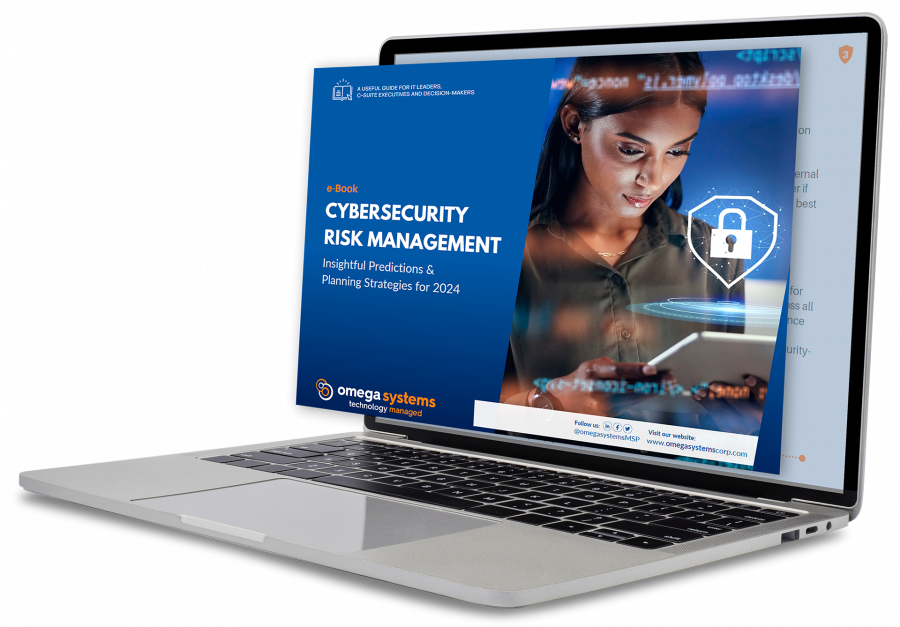
Nonprofits, contrary to common belief, have become prime targets of cybercrime in today’s interconnected world. In the minds of cybercriminals, nonprofits are the irresistible mix of utility and convenience. These organizations harbor a treasure trove of data, including sensitive donor information, financial records, and personal data of staff and beneficiaries – all highly coveted by malicious actors seeking to monetize such information. As they often collaborate with government agencies, other organizations, and private entities, nonprofits can also be conduits to more extensive networks and a stepping stone to infiltrate larger, more secure systems.
Furthermore, the inherent trust and transparency within nonprofits can unintentionally expose vulnerabilities, adding to their appeal to cybercriminals. Plus, often dealing with limited resources and a focus on their mission, these organizations typically lack the in-house expertise and dedicated cybersecurity teams found in private organizations, making them easier prey for cyberattacks.
Recognizing these risks and prioritizing and investing in cybersecurity is crucial for nonprofits to protect their valuable data, maintain stakeholders’ trust, and fulfill their essential missions.
Enhance Cybersecurity Amid Rising Cyber Threats
As nonprofit and charitable organizations increasingly embrace the use of SaaS applications and digital fundraising, the risk of cyberattacks has surged! Ransomware attacks are escalating, with many NGOs falling victim in recent years. Some of the most notable attacks include a data breach at Broward Health of California, affecting 1.35 million private records (including social security numbers) in January 2022, and a breach at the International Committee of the Red Cross, compromising 500,000 records in September 2022.
The lack of robust cybersecurity measures can make your organization susceptible to a host of cyber threats – phishing, malware, data breach, ransomware, social engineering, and many more – putting your operations, beneficiaries, and stakeholders at risk.
Maintain Constant Vigilance and Security Awareness
Cyber threats are rapidly evolving and becoming more and more sophisticated – and can impart severe consequences, including financial loss, damage to reputation, and privacy breaches. Educating everyone involved in your organization – staff, volunteers, and board members – can significantly reduce the risk of successful cyberattacks.
By keeping your entire organization updated and educated about existing and emerging cyber threats, you can proactively adapt your cybersecurity measures, detect vulnerabilities, and implement appropriate defenses to mitigate risks. This ongoing vigilance and awareness ensures resilient protection against cyber threats, preserving trust and enabling your nonprofit to focus on its core objectives.
Embrace Best Practices and Collaboration
Incorporating industry best practices in cybersecurity can go a long way for any organization. Nonprofits, however, often underestimate their vulnerability and fail to proactively secure themselves against cyber threats, which leaves them dangerously susceptible.
Standard protocols should include security measures like regular software updates, vulnerability assessments, strong password policies, data and access management, multi-factor authentication, vendor due diligence, data encryption, and secure network configurations. Industry-agnostic frameworks such as NIST CSF can give nonprofits a needed benchmark to use in measuring security effectiveness and ensuring proper cyber hygiene.
Nonprofits should also advocate for collaboration within their community, enhancing the sector’s overall resilience against cyber threats. Collaborating with other nonprofits can help your organization understand evolving cyber threats and prevention measures, and pooling knowledge and sharing best practices can also help strengthen your security posture.
Ensure Compliance and Meet Legal Obligations
Compliance with data protection regulations is essential to ensure the organization is operating within the bounds of the law and maintaining the privacy of stakeholders’ data. Noncompliance risks for nonprofits vary significantly, depending on the nature and extent of compromised data. These risks include lawsuits, financial compensation and remediation costs, government audits, fines from banks (particularly concerning user finances), and damage to revenue and reputation.
Ensuring compliance not only avoids these potential setbacks but also allows your organization to focus on its mission without being burdened by the aftermath of data breaches. Partner with an efficient and innovative solutions provider like Omega Systems to streamline, automate and manage the compliance process.
Engage Cybersecurity Professionals
While nonprofits often operate with limited resources, allocating a portion of the budget to cybersecurity cannot be overlooked. Consider it an investment in the sustainability of the organization. Collaborate with cybersecurity experts to determine cost-effective solutions that suit your organization’s needs and limitations. These professionals can assess the organization’s vulnerabilities, recommend appropriate measures, and help implement a tailored cybersecurity strategy that aligns with your limited resources.
At The TNS Group, we offer customizable cybersecurity solutions to cater to your nonprofit’s specific needs and objectives. With our managed cybersecurity service, we can help ensure your remote or hybrid workforce can operate smoothly while safeguarding sensitive member and donor data.
To sum up, the importance of prioritizing cybersecurity for nonprofits cannot be overstated – it stands as a critical defense for the countless individuals impacted by their mission. Your organization’s commitment to enhancing cybersecurity is an investment in the trust of those it serves.
Each component of cybersecurity can significantly impact your cause and must be carefully planned for. Gain insights into these components and evolve into a security-forward organization by reading Omega’s e-book, Cybersecurity Risk Management: Anticipating Future Trends and Planning Strategies for 2024, or contact us today to learn more.
EDITOR’S NOTE: This article was originally posted by Omega Systems. The TNS Group joined the Omega Systems family in December 2022.
Categories: Information Technology Services, Managed Security Services, Managed Service Provider, MSP Blogs, Solution Blogs




